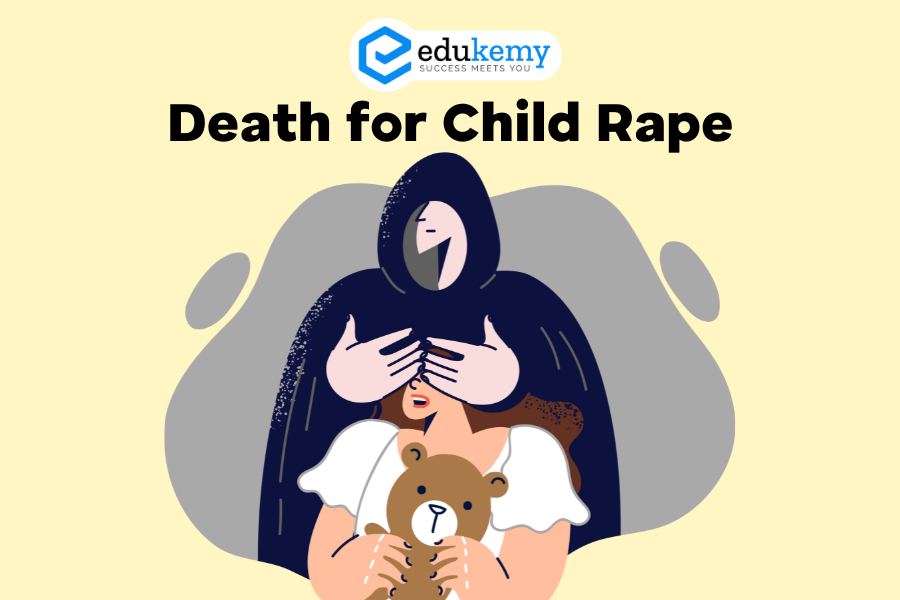
Discussing such a heavy topic with children requires careful consideration and sensitivity. It’s essential to approach the subject with honesty while also being mindful of their age and emotional readiness. When explaining death resulting from crimes like child rape, it’s crucial to emphasize the severity of the harm caused and the importance of justice and safety. Using age-appropriate language and concepts, the conversation can focus on the importance of protecting children, the consequences of harmful actions, and the significance of seeking help from trusted adults if they ever feel unsafe. While it’s a challenging conversation, it’s also an opportunity to instill values of empathy, respect, and the importance of standing up against injustice.
Contents
Death for Child Rape
Deterrence Argument:
- Belief in the deterrent effect of harsh punishments to prevent child rape.
- Justice for child survivors is perceived to demand the inclusion of the death penalty.
- The heinous nature of the crime is seen as deserving the harshest punishment.
Flaws in the Arguments:
- Deterrence Fallacy:
- The deterrence argument oversimplifies the complex interplay of social, economic, cultural, and psychological factors influencing individuals.
- Numerous studies question the effectiveness of the death penalty as a deterrent.
- Resources diverted to the death penalty could be better utilized in developing more effective preventive measures.
- Justice Concerns:
- While advocating for justice, the real impediments lie in low conviction rates and deficiencies in investigations and prosecutions under the Protection of Children from Sexual Offences (POCSO) Act.
- Shortcomings include a lack of specialized professionals, inadequate child protection services, and non-compliance with child-friendly legal procedures.
- Addressing these issues is crucial for ensuring genuine justice for child survivors.
- Under-reporting Dynamics:
- A significant number of perpetrators are family members or close acquaintances, leading to underreporting.
- The prospect of the death penalty may exacerbate underreporting, as families may be reluctant to subject a known person to capital punishment.
- Attitudinal Challenges:
- The legislation is rooted in societal abhorrence towards the crime, driving the perception that such offenders ‘deserve’ the death penalty.
- Assessing ideas like denying human rights to those involved in heinous crimes is essential.
- Legal and Arbitrariness Concerns:
- Constitutional mandates require legislation to provide sentencing judges with the option of choosing between life imprisonment and the death penalty.
- The arbitrary nature of imposing death sentences, especially in child rape cases, raises concerns about individual predilections of judges.
- Vulnerability and Discrimination:
- The death penalty disproportionately impacts economically marginalized groups, as revealed by the Death Penalty India Report of 2016.
- Over 75% of death row prisoners were found to be extremely poor and belonged to marginalized communities.
- Addressing this discriminatory impact is crucial when considering the death penalty for child rape cases.
FAQs
Q: What is child rape?
Child rape is a heinous crime where an adult or an older individual engages in non-consensual sexual activities with a child. It is a form of child sexual abuse that can have severe and long-lasting physical, emotional, and psychological effects on the victim.
Q: What are the consequences of child rape?
The consequences of child rape can be devastating and lifelong. Victims may suffer from physical injuries, sexually transmitted infections, psychological trauma, such as post-traumatic stress disorder (PTSD), depression, anxiety, and self-esteem issues. Additionally, they may experience difficulties in forming healthy relationships and may struggle with trust and intimacy.
Q: How prevalent is child rape?
Child rape is unfortunately more prevalent than many realize. Statistics vary across regions and countries, but studies consistently show that a significant number of children experience some form of sexual abuse. However, it’s important to note that due to underreporting and stigma, the actual numbers may be higher than reported.
Q: What should I do if I suspect a child is being raped?
If you suspect that a child is being raped or is in any danger of sexual abuse, it is crucial to take immediate action. Contact local law enforcement or child protective services to report your concerns. It’s important to handle the situation delicately and ensure the safety and well-being of the child is the top priority.
Q: How can we prevent child rape?
Preventing child rape requires a multi-faceted approach involving education, awareness, and intervention. Providing comprehensive sex education to children and adults can help empower them with knowledge about healthy relationships, boundaries, and consent. Communities must also work together to identify and address risk factors such as poverty, substance abuse, and lack of parental supervision. Additionally, enforcing strict laws against perpetrators and providing support services for victims are essential components of prevention efforts.
In case you still have your doubts, contact us on 9811333901.
For UPSC Prelims Resources, Click here
For Daily Updates and Study Material:
Join our Telegram Channel – Edukemy for IAS
- 1. Learn through Videos – here
- 2. Be Exam Ready by Practicing Daily MCQs – here
- 3. Daily Newsletter – Get all your Current Affairs Covered – here
- 4. Mains Answer Writing Practice – here

